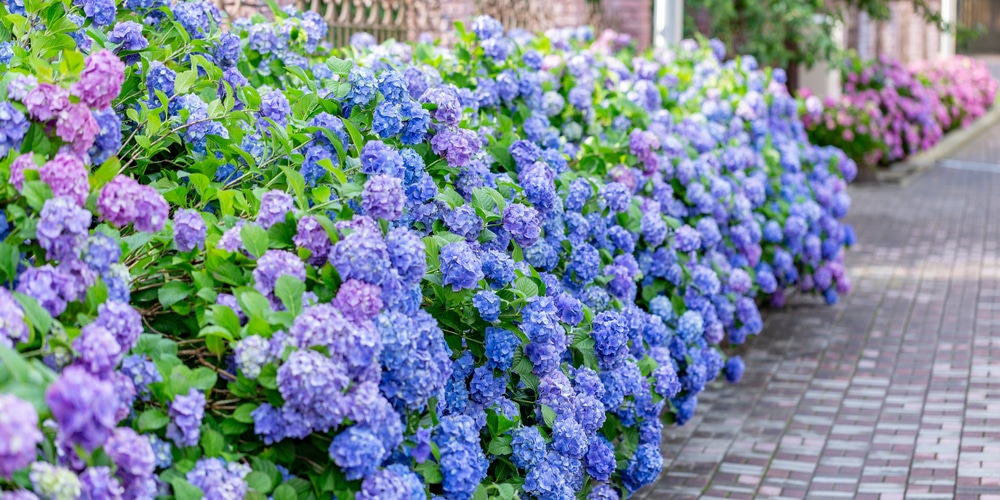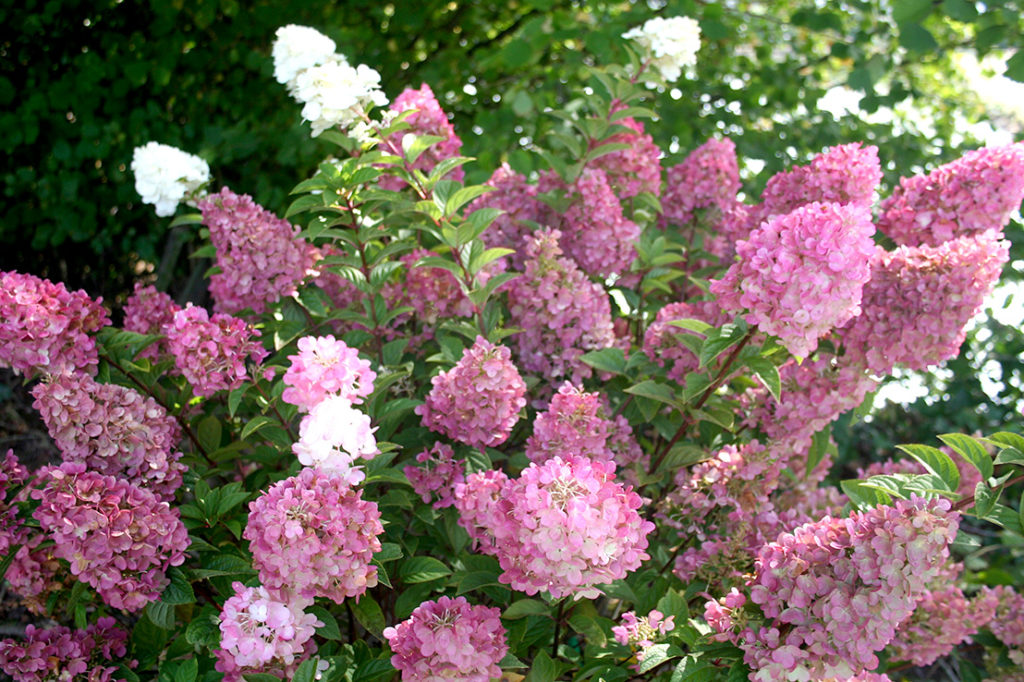Understanding Hydrangea Sun Requirements
Hydrangeas, like most plants, require sunlight to thrive. But have you ever wondered how much sun is ideal for these beautiful flowers? The answer lies in understanding the specific sun requirements of hydrangeas. Providing the right amount of sunlight can make all the difference in encouraging blooming, promoting healthy foliage, and preventing common problems like leaf scorch and wilting. When it comes to determining how much sun for a hydrangea, it’s essential to consider the type of hydrangea, as well as the climate and soil conditions in which it’s growing. By understanding these factors, you can provide your hydrangea with the perfect balance of sun and shade, leading to a healthy and thriving plant.
How Much Sun is Too Much Sun?
While hydrangeas need sunlight to thrive, too much direct sunlight can be detrimental to their health. Prolonged exposure to intense sunlight can cause leaf scorch, leading to brown or yellow leaves and reduced flowering. In extreme cases, it can even cause wilting, which can be fatal if not addressed promptly. It’s essential to understand that different hydrangea varieties have varying tolerance to sunlight, and what works for one type may not work for another. For instance, Bigleaf hydrangeas are more susceptible to leaf scorch than Panicle or Oakleaf varieties. When determining how much sun for a hydrangea, it’s crucial to consider the specific needs of your plant to avoid these common pitfalls.
Optimal Sunlight Conditions for Hydrangeas
When it comes to determining how much sun for a hydrangea, it’s essential to consider the specific type of hydrangea you’re growing. Bigleaf hydrangeas, for example, prefer partial shade to full sun, with 4-6 hours of direct sunlight per day. Panicle hydrangeas, on the other hand, can tolerate more sun and require 6-8 hours of direct sunlight per day. Oakleaf hydrangeas fall somewhere in between, thriving in partial shade with 4-6 hours of direct sunlight per day. It’s also important to note that hydrangeas grown in warmer climates may require more shade to prevent scorching, while those grown in cooler climates may require more sun to promote blooming. By understanding the specific sunlight needs of your hydrangea, you can provide the optimal conditions for healthy growth and blooming.
Factors Affecting Sunlight Needs for Hydrangeas
When determining how much sun for a hydrangea, it’s essential to consider the various factors that influence their sunlight needs. Climate plays a significant role, as hydrangeas grown in warmer climates may require more shade to prevent scorching, while those in cooler climates may require more sun to promote blooming. Soil type is another crucial factor, as hydrangeas growing in well-draining soil may require more sun than those in heavy, moisture-retentive soil. Surrounding vegetation can also impact sunlight needs, as nearby trees or shrubs can provide shade and reduce the amount of direct sunlight hydrangeas receive. Additionally, the time of day and season can affect sunlight intensity, with morning sun being gentler than afternoon sun and summer sun being stronger than spring or fall sun. By considering these factors, gardeners can provide their hydrangeas with the optimal amount of sunlight for healthy growth and blooming.
How to Provide the Right Amount of Sun for Your Hydrangea
To determine how much sun for a hydrangea, start by assessing the sunlight conditions in your garden. Observe the area where you plan to plant your hydrangea at different times of day and season to understand the patterns of sunlight and shade. Take note of any obstacles, such as trees or buildings, that may block or filter the sunlight. Next, consider the specific sunlight needs of your hydrangea variety, as discussed earlier. If your hydrangea requires partial shade, consider using shade cloth or planting it under a tree with dappled shade. If your hydrangea requires full sun, choose a location that receives direct sunlight for at least 6 hours a day. Finally, be prepared to adjust your hydrangea’s sunlight conditions over time, as the plant grows and the surrounding environment changes. By following these steps, you can provide your hydrangea with the right amount of sun for optimal growth and blooming.
Common Mistakes to Avoid When Planting Hydrangeas
When it comes to planting hydrangeas, there are several common mistakes to avoid to ensure these beautiful flowers thrive. One of the most critical mistakes is placing hydrangeas in full sun without proper protection. This can lead to leaf scorch, wilting, and reduced flowering, as discussed earlier. Another mistake is failing to consider the specific sunlight needs of the hydrangea variety. For example, Bigleaf hydrangeas require more shade than Panicle hydrangeas, so planting them in full sun can be detrimental. Additionally, neglecting to assess the surrounding environment and adjust the sunlight conditions accordingly can also harm hydrangeas. By understanding how much sun for a hydrangea and avoiding these common mistakes, gardeners can provide their hydrangeas with the optimal sunlight conditions for healthy growth and blooming.
Hydrangea Care Tips for Different Sunlight Conditions
Once you’ve determined how much sun for a hydrangea, it’s essential to provide the right care to ensure optimal growth and blooming. Here are some specific care tips for hydrangeas growing in different sunlight conditions:
For hydrangeas in full sun (6+ hours of direct sunlight): Water regularly to prevent drought, but avoid overwatering, which can lead to root rot. Fertilize with a balanced fertilizer in the spring and summer months. Prune in late winter or early spring to maintain shape and promote healthy growth.
For hydrangeas in partial shade (4-6 hours of direct sunlight): Water regularly, but reduce frequency to prevent overwatering. Fertilize with a slightly acidic fertilizer in the spring and summer months. Prune in late winter or early spring to maintain shape and promote healthy growth.
For hydrangeas in full shade (less than 4 hours of direct sunlight): Water carefully, as hydrangeas in full shade may be more prone to root rot. Fertilize with a low-nitrogen, high-phosphorus fertilizer in the spring and summer months. Prune lightly in late winter or early spring to maintain shape and promote healthy growth.
By following these care tips and understanding how much sun for a hydrangea, gardeners can provide their hydrangeas with the optimal conditions for healthy growth, blooming, and overall success.
Conclusion: Finding the Perfect Balance of Sun and Shade
In conclusion, understanding how much sun for a hydrangea is crucial for their growth, blooming, and overall health. By recognizing the importance of sunlight and its potential risks, gardeners can provide their hydrangeas with the optimal conditions for success. Whether you’re growing Bigleaf, Panicle, or Oakleaf hydrangeas, it’s essential to consider the specific sunlight needs of each variety and adjust accordingly. By avoiding common mistakes, providing the right care, and finding the perfect balance of sun and shade, gardeners can enjoy the beauty and charm of these stunning flowers. Remember, finding the perfect balance of sun and shade is key to unlocking the full potential of your hydrangeas, so take the time to understand their unique needs and provide them with the care they deserve.






:max_bytes(150000):strip_icc()/summer-blooming-oakleaf-hydrangeas-2132724-09-128eb6d70f844a0c8f8eb984bea6c6d7.jpg)


